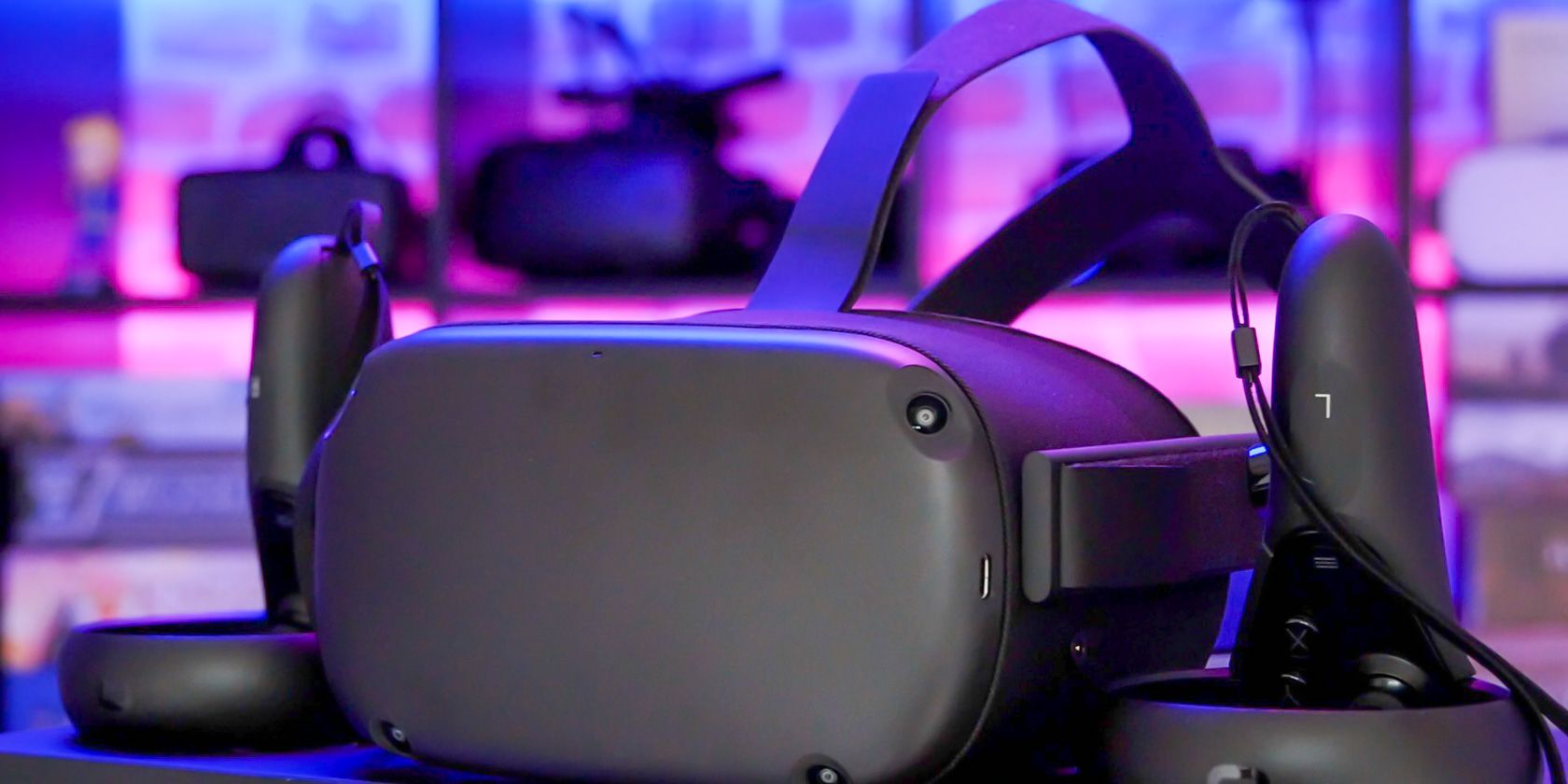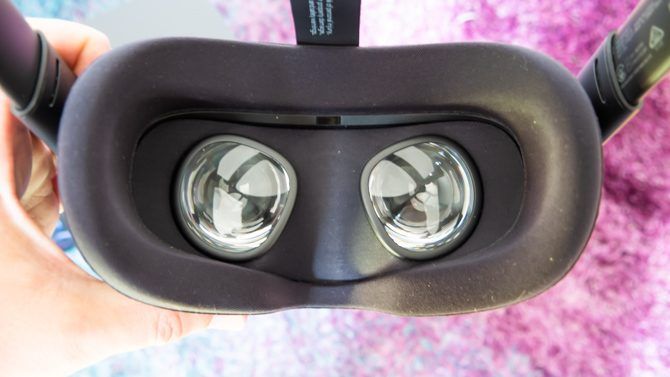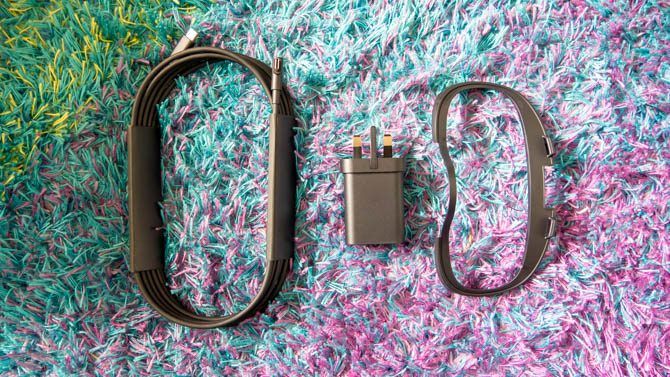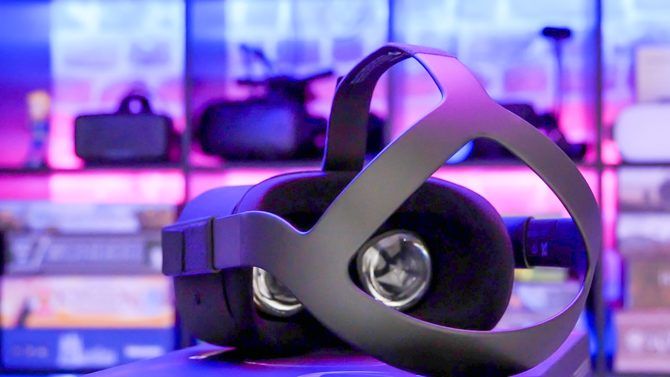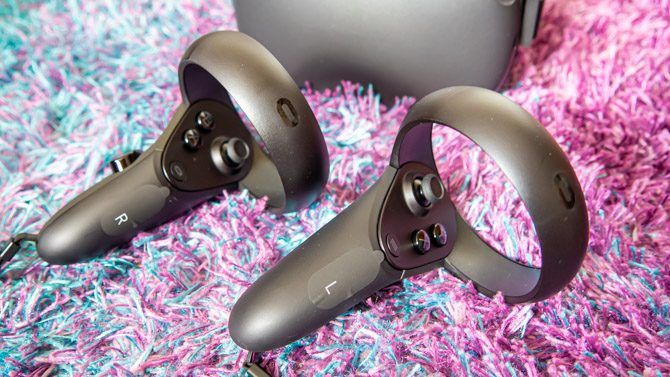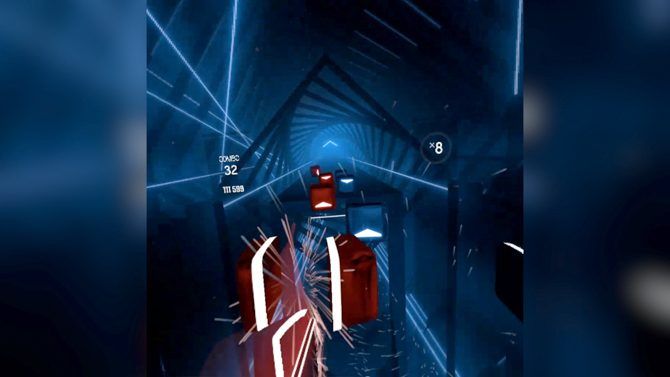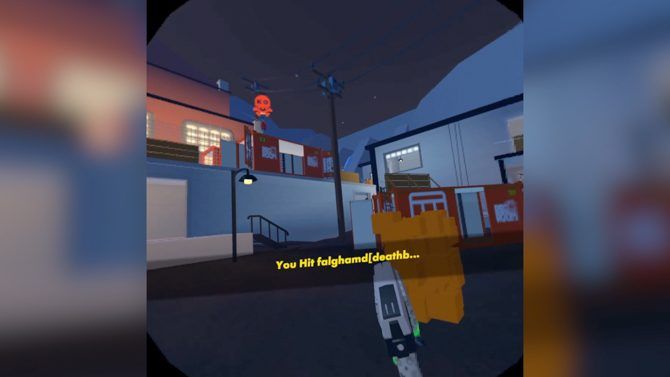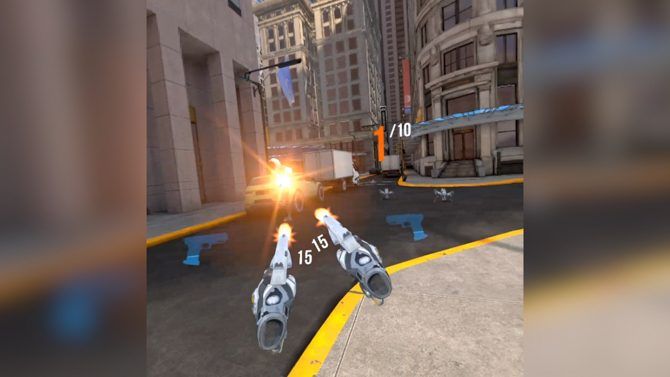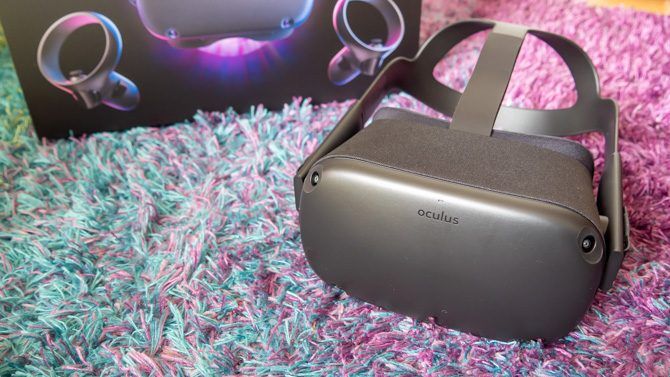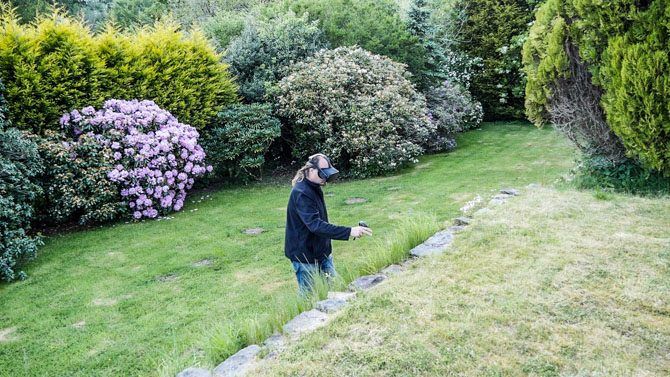Oculus Quest
The first true VR console, the Oculus Quest is an all-in-one system that requires no PC or external tracking sensors. The only let down is the tinny audio, but that's a compromise I can live with.
The Oculus Quest is a groundbreaking achievement: it's an affordable VR headset that anyone can use. It doesn't need a gaming PC; or any PC at all, in fact. It's a self-contained unit, with full motion controllers, and an inside-out tracking system that doesn't need external sensors. It just works. It's the most console-like VR system yet.
Join me as I take a closer look at exactly what had to be compromised to make this possible in a $399 package. At the end of this review, enter to win your own Oculus Quest in our giveaway!
Friends Don't Let Friends Use Mobile VR
Not long ago, if you'd have told me mobile VR had any future at all, I'd have laughed. Google Cardboard and the Daydream successor were a thorn in the side of any real VR efforts. They poisoned the well, and now even Google doesn't like to talk about them. If you met someone who said they'd tried VR and it was terrible, perhaps even made them sick, you can guarantee they meant they played with some horrid mobile VR headset. There's a good reason Apple mostly left that market alone. Mobile VR has singlehandedly damaged the reputation of VR as a whole for generations to come.
But the Oculus Go gave us a glimpse of what mobile VR could be when done right. It was still ultimately limited to standing on sitting in one place, and using a pointer or gamepad to navigate, but it was a great refinement.
The Oculus Quest is groundbreaking. It offers a full "room scale" VR experience, with fully tracked controllers for both hands, in a single untethered all-in-one mobile package. It's actual, real VR, in a mobile package. It plays real VR games. This is the headset that will bring VR to the world.
Oculus Quest Specifications
- Resolution: 1440 x 1600 per eye (compared to 1280 x 1440 on the Oculus Go, or 1080 x 1200 on the original Rift)
- Display: OLED 72Hz
- Weight: 571g
- Snapdragon 835 with 4GB RAM
- Connectivity: USB-C, Bluetooth 4.0, Wi-Fi ac/b/g/n
- Internal speakers
- Physical IPD adjustment
- $399 for 64GB model, $499 for 128GB
In the box, you'll also find:
- 5V 3A fast USB-C charger
- 3m/10ft USB-C cable
- Left and right controllers
- Glasses spacer
The glasses spacer can be used to increase the distance from your face to the lenses, in case your glasses are pushing up against them. My frames are quite small so I haven't found this to be necessary, but you may. In terms of comfort, I found no issues with 1-2 hour play sessions. The semi-rigid strap should cup the back of your skull, relieving some of the weight from your face. If you've sweat a bit too much, the facial padding can be removed and washed.
The internal battery is good for about two to two and a half hours of use. The inclusion of a really long USB cable is generous and allows you to continue playing even when low on power. Many users are also buying shorter USB-C cables and attaching an additional battery pack directly to the back of the headset.
Two controllers are included in the set. These are very similar to the original Rift Touch controllers, with the same button layout and capacitive sensing features. Each controller features a thumbstick, grip and trigger buttons, A/B buttons on top, and a system or menu button. The only real difference is that the ring of tracking LEDs faces up top rather than down, for better visibility from the cameras in the headset. As with the originals, these are also designed for your left or right hand. Helpfully, they're labeled L or R in the augmented reality view as you put on the headset.
Interestingly, these are also the exact same controllers used on the current desktop Rift S headset. Not just similar; they are interchangeable. If you own both headsets and happen to lose or break a controller, you will be able to use these instead, and vice versa.
Audio on the Quest is delivered in a similar way to the Oculus Go, using internal speakers within the headset. This results in appallingly tinny audio that everyone around you can hear, and it's the only major criticism I have. You can optionally purchase a pair of stereo earbuds, or connect your own headphones, but this is additional wires on an otherwise very elegant design.
The Games
While the library is quite slim at launch, there are some amazing titles available: Beat Saber, Rec Room, and Robo Recall being the most notable. These are not new games–they've been available on PC for a while–nor are they in any way fundamentally different to their PC versions.
If you already own some games on the Oculus store, you may find they're available to download on the Quest, too. But it's unlikely. Some you may have to purchase again. To be clear: this is the developer's decision, not Oculus. The facility for cross-buy is there, but it's up to the developers to both add support for the Quest, and to set whether it's free for existing owners.
Beat Saber is not free, even if you already own it for the Rift. It is the perfect game for demoing the Quest though, and apart from less flashing lights, it's identical to the version on other platforms (not to understate the amount of optimization I expect it took the developer to get it up to that standard). The only downside is that you'll really notice the lack of bass with the built-in audio.
Rec Room has been my main point of comparison, with around 300 hours mostly played on the HTC Vive. It's often compared to Wii Sports, but it's so much more than that. Consisting of many different games, each of which would stand alone as a full game in their own right, some are not yet available on the Quest. Paintball is, as is the Golden Trophy adventure. My verdict is: this is the exact same game, just with much less shininess. There's less effects, less particles, less reflections, less lighting–but gameplay is the same.
In fact, you can even play alongside your PC VR, PSVR, and non-VR players on other platforms, as it's completely cross-platform play. I played about 95% as well as I would on PC. In fact, the higher resolution means paintball sniping is actually easier. Rec Room is completely free, but you can support the developers through in-game tokens for cosmetic items.
Robo Recall is cross-buy enabled, and while I wasn't much of a fan on the tethered Rift headset, the freedom of wireless really lets the game shine on the Quest, even with a small graphical downgrade.
The Quest doesn't support SteamVR natively. That may sound obvious, since it isn't connected to a PC, but they were originally rumors that a tethering feature might exist, enabling the Quest as a hybrid mobile/PC headset. I say "natively" not supported because an open source project called ALVR has enabled wireless streaming of SteamVR games to the Quest. Virtual Desktop has done the same, but the feature was removed from the Oculus Store version, so for either method, you'll need to enable developer mode and sideload the APK through the SideQuest unofficial store. This can also be used to sideload custom Beat Saber songs!
Tracking
The biggest concern I had for the Quest was the inside-out tracking system. This uses no external sensors or markers, nor any laser emitters. Instead, four cameras on the headset itself look at your surroundings and see where both you and your controllers are located. Combined with IMU sensor data, this allows for accurate positioning in the 3D space.
This is essentially the same as the current crop of Windows Mixed Reality tethered PC headsets, and my experience with those has been... horrendous. It's easy to lose tracking on the WMR controllers when they're near your head, resting to the side, or behind you.
The difference is that the Quest combines four cameras worth of data (located on both the top and bottom of the headset), while WMR uses only two. This gives a much wider field of view around the sides of the headset, allows you to get closer to your face, move controllers further out to the side, and generally just works seamlessly.
In fact, the Oculus Quest has restored my faith that inside-out tracking is perhaps the most viable solution moving forward. There will always be room in the market for the epic warehouse scale and the flawless tracking capabilities of the Valve's laser-based Lighthouse system, but for most people, the inside-out Oculus tracking is going to be more than sufficient.
There are some specific downsides to this approach. It won't work in low-light because the headset is unable to locate itself. It won't work in bright sunlight either, because the infra-red of the sunlight overpowers the infra-red tracking LEDs on the controllers (even though your headset itself will be tracking fine, you won't have hands!). You shouldn't be using your headset in bright sunlight anyway as even a few seconds shining into the lenses will burn the screen, but you may want to use it in the dark for a virtual cinema.
Oculus has promised a future update will address this, allowing the Quest to degrade to 3DOF (rotational only) tracking in dark environments specifically for use cases like watching a movie or using virtual desktop. This is a clever compromise, but there's no specific date penned for this update.
Some users are reporting success with IR lamps in dark rooms, too.
Passthrough Cameras
Using cameras on the headset to catch a glimpse of your real-world surroundings is nothing new–the original HTC Vive had it, Windows Mixed Reality has it–but the Oculus Quest has integrated it so seamlessly that it's actually useful. When you step outside of your defined boundary, the real world comes into view. It's somewhat grainy, monochrome, and the scale is every so slightly too small for my eyes, but it absolutely works. You can walk around, make a drink, answer the door, and do whatever it is you need to do before jumping back into your play space. It remembers where your playspace is even if you wander off somewhere completely different.
I can't emphasize enough how cool, and useful, this actually is. It's a small feature that I never knew how badly I wanted it until I tried.
Beyond a stereoscopic passthrough view of the world, there's no further deep integration into games or the system. It's in this mode that you draw your boundaries, but there's no augmented reality gaming, and no way to map your real-world objects into a virtual environment. Oculus has teased these sort of features, but I'd expect those on PC if they ever materialize, rather than mobile.
Should You Buy The Oculus Quest?
The Oculus Quest has that all-important quality of pick up and play. There are no longer any barriers to playing VR, and that's an incredible achievement.
Should you buy a Quest if you already have another PC-based VR headset or PSVR? Probably not. You'll miss out on superior graphics or exclusive games. Unless you really want one for travel or demos, there's no need to buy this headset as well. It's not for you.
Though I admit, even with a superior Vive setup, I find my VR time split equally between that and the Quest. I don't always want to lock myself away in the basement. Sometimes it's nice to be alongside other members of the family in the living room or kitchen.
This is the headset that will bring VR to the world.
The Good
- All-in-one device with no setup needed.
- Inside-out tracking works well.
- Stereo passthrough view of the world when you step outside boundaries.
- Freedom to play anywhere.
- Seamless, console-like experience.
The Bad
- Audio lacks bass, and everyone around you can hear.
- Light leak is problematic when it doesn't currently work in the dark. A Lights Out mode is promised at some point specifically for watching movies.
- Restricted library, and even those that are ported may not be cross-buy. You may find yourself paying for the same games on the Oculus store again.
If you're going to get an Oculus Quest, you'll also want to look into the best Oculus Quest accessories that'll improve your experience!

